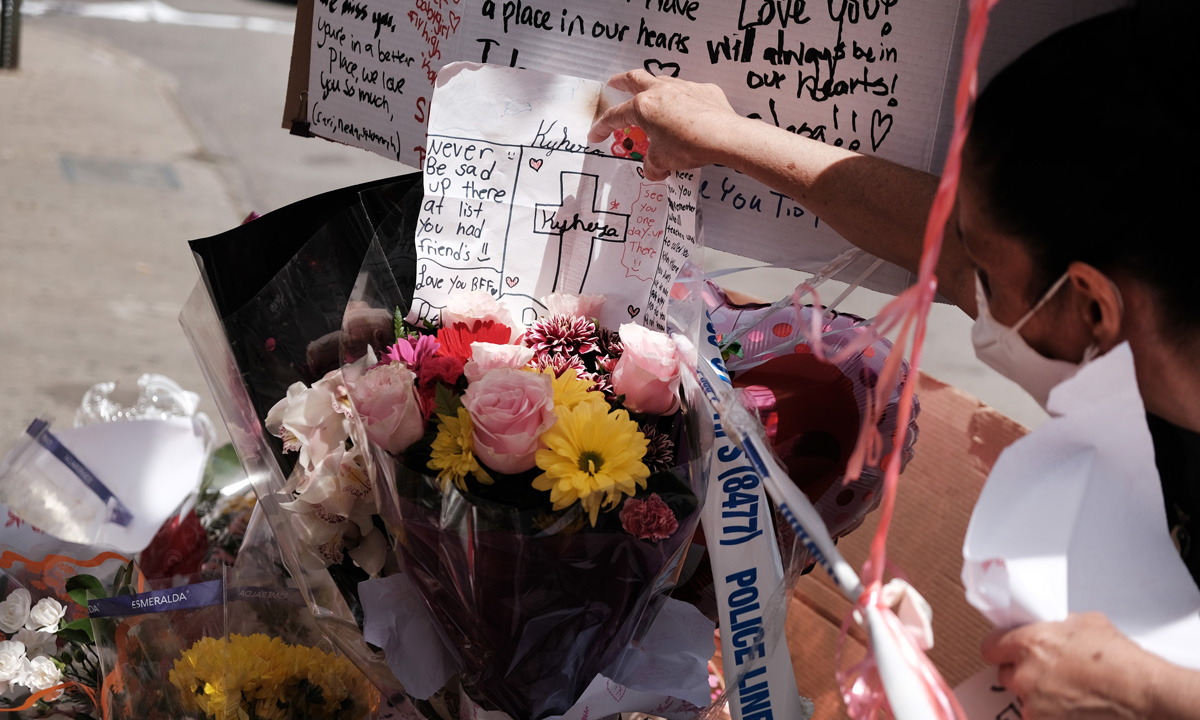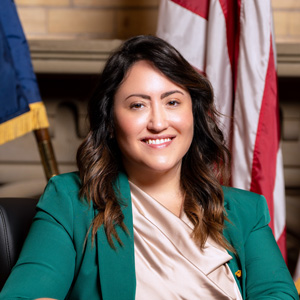After a Stray Bullet Kills a NYC Teen, Chancellor Calls for Community Support
Aviles-Ramos: Imagine how much stronger our cities would be with institutions, businesses and local groups working alongside families and schools.

Get stories like this delivered straight to your inbox. Sign up for The 74 Newsletter
They say it takes a village to raise a child, but in our increasingly online post-pandemic world, our families are forced to navigate resources alone. In many communities, including my own, the responsibility to care for, monitor and protect our children falls solely to families and schools.
Imagine how much stronger our cities would be if we were to embrace an ecosystem of care, with faith institutions, businesses, and local organizations working alongside families and schools.
Across the country, there is a deep youth mental health crisis that is fueling a trend of violence among our babies. In Denver, Colorado, an average of 700 young people under 25 are affected by gun violence each year. In Alameda County, California, gun violence is the leading cause of death for children ages 1 to 17.
According to Everytown statistics, 60 children and teens are impacted by firearms every day in the United States. As parents and guardians, we pour our whole selves into our children. No one should ever have to endure the agony of losing a child, especially to something as preventable as gun violence.
Earlier this month, in my community, Evette Jeffrey, a 16-year-old girl in the Bronx was killed by a stray bullet fired by another teenager. As a mother, an educator, and a lifelong Bronxite, this tragedy was personal for me, and I saw firsthand the impact of this devastation across the borough. The following week, another two babies were victims of gun violence in Brooklyn. It is unacceptable that over 30 children under the age of 18 have been killed or injured in New York City this year alone.
The pandemic lockdowns left our young people feeling isolated and emotionally adrift. The CDC reports the number of children experiencing persistent sadness or hopelessness remains 10% higher than in 2013. For two years, we told our children that their entire lives are online, from their instruction to enrichment, and beyond. Now, we’re seeing the repercussions: Our kids don’t know who to talk to or where to go when they are in crisis.
Teens are increasingly tethered to their phones — half of those aged 12 to 17 reported four or more hours of daily screen time between July 2021 and December 2023. Throughout the pandemic, our children were forced to live their lives through social media and virtual schooling. Now, as we bring them back to in person socialization, it’s no wonder that they’re ill equipped.
As the leader of the nation’s largest school district, it is my responsibility to lead New York City Public Schools’ response to this mental health epidemic at its root. If we are to do right by our kids, we cannot just address the symptoms of this crisis. The solution lies in community interdependence.
We’ve seen glimpses of this kind of symbiosis at work in places like California, which like New York City, is offering free online mental health counseling, or Chicago, where local nonprofits are supporting afterschool programs and other services at high-poverty campuses. We must continue to scale this work.
In our schools, we must teach our kids how to use technology responsibly and appropriately. Devices can be used to enrich and support classroom instruction, offering real-time support in math class or opportunities to explore the world without leaving the neighborhood.
We must also learn to take care of ourselves so that we can be better and stronger for our kids. We are role models, leaders, and safe, trusted grown-ups. Our students must be able to turn to us without judgement in times of need.
But this goes beyond us. For this to work, I call upon our business owners to be more than just bystanders. When you welcome our kids by name when they enter your store, it shows that there are adults who care and who they can turn to when they need to feel seen, heard, and protected.
I call upon our faith leaders to be active partners with the schools in their communities. If they see a child who is struggling, reach out so we can get them help before it’s too late.
Robust in-school mental health supports are essential, but they can’t stand alone. We need community mental health partners to amplify their impact. Local universities, we need you to bolster the mental health worker pipeline and place young professionals-in-training in schools to build out capacity.
We’re asking our community-based organizations and leaders with social capital in our neighborhoods to keep their ears to the ground — aware of brewing tensions, conflicts, and signs of distress — so we can act before violence erupts.
The National Center on Safe Supportive Learning Environments noted that “developing and sustaining comprehensive mental health systems should be a shared endeavor between schools and community partners.” We all bear a collective responsibility in ensuring that every child gets the bright and bold future they deserve, and it is up to us to work together to identify at-risk youth and intervene early. As New York City mourns the loss of one of our own, I remain committed to honoring that life by protecting others. Our young people are crying out for help, and we must answer. It will take all of us. Let’s get to work. All of us — community members, business leaders, faith leaders, and families — need to rally together to make sure our students have a safe adult in their lives they can turn to in times of crisis. Let’s get to work.
Get stories like these delivered straight to your inbox. Sign up for The 74 Newsletter

;)
